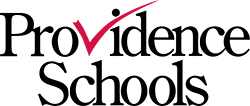Cursos disponibles
Module 1: What is SEL?
REdCon
The objectives of this course are; to increase educators’ awareness, knowledge, and skills regarding social-emotional learning, to promote collaboration between educators, community, and families to address the social emotional learning competency development of all students, to enhance knowledge of educational practices that promote social-emotional learning competency development, and to identify areas of potential growth in your practice.
Exploring Barriers in the LGBTQ+ Community
REdCon
You may have heard that inclusion is important but wondered what inclusion really means. Is it as simple as inviting a coworker to join you for lunch? And why is it so important anyway?
Bias 101
REdCon
Over the past 5 years the term “bias” has been a hot topic in the world of diversity, equity and inclusion. While often referred to as a negative light the fact is that we all have biases. Therefore, bias is not inherently good or bad, however they can be a huge barrier to diversity, equity and inclusion when left unchecked. This course will introduce you to both types of bias and forms of bias.
Social Identity 301
REdCon
An inclusive culture involves the full and successful integration of diverse people into a workplace or industry. While an inclusive culture encompasses a commitment to workplace diversity, it is not limited simply to basic representation. It indicates a climate in which respect, equity, and positive recognition of differences are all cultivated, and the social and institutional response to disability poses no barrier to a positive employment experience.
Social Identity 201
REdCon
You may have heard that inclusion is important but wondered what inclusion really means. Is it as simple as inviting a coworker to join you for lunch? And why is it so important anyway?
Diversity, Equity, and Inclusion 201
REdCon
There are many tangible benefits that organizations can experience just by having a diverse workplace. Naturally, the question becomes why? What benefits and advantages do diverse organizations have over their non-diverse counterparts?
Equitable Actions 201
REdCon
By the end of this module you will be able to define equity and the 5Ps, utilize the 5 Ps to analyze equity, have performed an equity inventory, and explored equitable actions and how to promote equity using the 5 Ps. You will gain an increased understanding on the importance of disrupting or mitigating inequity, and review strategies for disrupting or reducing inequity.
Generational Cohorts in the Workplace
REdCon
The learner will have strategies to work across generational cohorts as well as strategies so all generations feel respected in the workplace.
Barriers to Equity (Micro-messages) 101
REdCon
Diversity is the starting point, inclusion is the highway, and equity is the destination. However, there are barriers to equity, potholes along the way, that individuals and organizations must confront. While most people are aware of harmful acts such as hate speech, harassment, and violence, there are other small acts or micro-messages that have a great impact on equity.
Social Identity 101
REdCon
How do you see yourself in the world? When we are asked this question, we often cannot help but include our social identities. Can you describe what your dominant social identities are? How do these identities affect how you present yourself to the world? These topics will be discussed in this course.
Diversity, Equity, and Inclusion 101
REdCon
All of us know people that are different from us, whether they are family, friends, or coworkers. Diversity plays a huge role in who we are, and it exists in almost every aspect of our lives.
We all enjoy the feeling of inclusion in group events. Thus, it is equally as important to make others feel that inclusivity as well. The feeling of inclusion can help bring us all together in a positive way.
In this course, participants will learn more about Diversity, Equity, and Inclusion (DEI), why they are important, how culture and bias play a role in DEI, and how to identify individual and organizational characteristics and behaviors of DEI.
